2019 Jetta GLI First Drive - Jetta, Enhanced

Volkswagen’s latest iteration of the Jetta is a well-rounded commuter car, but a tad boring. VW had an easy fix for that in mind – just implant the heart of the GTI hot hatch along with some Golf R bits. Boom, instant sports sedan.
There’s been a GLI version of the Jetta since 1984, and every previous one I’ve driven has been a fun little hoot to drive; a way to put a little spice in the otherwise sorta bland Jetta recipe. This one, though, ups the ante. Instead of a nice little sprinkle of seasoning, someone in the kitchen doused it with cayenne pepper.
What you get here is not just a Jetta that’s more fun to drive, but a proper affordable sport sedan.
(Full disclosure: Volkswagen flew me to Knoxville, Tennessee and fed me meals and booze, while also putting me up in a nice hotel. The company also turned me loose on the famed Tail of the Dragon and nearby roads.)
As noted in the disclosure, Volkswagen’s destination of choice for this product launch involved the famed Tail of the Dragon in Tennessee – all 11 miles and 318 corners of it. And not just that road, but other nearby byways that were also full of challenging corners and fun sweepers. The exact kinds of roads that compact sport sedans are supposed to be built for.
Sure, most of the Tail tourists I spotted were running powerful Mustangs and Camaros (I saw at least one ZL1), along with rented V6 versions of same, but those cars seem almost overpowered for the technical Tail. Something like the GLI or Honda Civic Si (saw a current one on the Tail) would be the sedan of choice. Or a WRX.
Volkswagen drops the GTI’s 2.0-liter turbocharged direct-injection engine into the GLI (which, like the standard Jetta, rides on the MQB platform), and in this application it makes 228 horsepower and 258 pound-feet of torque. That’s an increase of 18 and 51, respectively, over the last GLI. A six-speed stick is standard and (thank the heavens) available across all trims, while a 7-speed DSG automatic gearbox is available.
The extra power over a standard Jetta is appreciated. Passing punch is plentiful, and you can scoot from corner to corner quickly. Acceleration can be addictive, and this Jetta has a smooth yet feisty response that’s not seen in the regular car.
Larger brakes as compared to standard Jettas help contain corner entry speed. These aren’t just any brakes, either. The front brakes, borrowed from the GTI and Golf R, are vented discs measuring 13.4 inches in diameter. The rear discs measure 11.8 inches.
The GLI uses the same electronically controlled limited-slip differential that’s available in other performance-oriented VWs, and while its mission is to prevent understeer via individual brake-force distribution, it doesn’t fully do so (although it does seem to eliminate torque steer, which is the other main goal). Understeer does occur when the GLI is pushed hard. Not surprising for a front-drive sedan, and it’s generally controllable. Yes, the car plows a little when you overcook a corner, but it’s easy to adjust the line. I never worried about shooting off into the trees.
Available DCC adaptive damping was on board to stamp out body roll, but like the electronic limited slip, it only goes so far. There is still some roll present even in DCC-equipped cars, although it wasn’t much worse without the DCC system. That said, most of the body roll and understeer I experienced was predictable, in line with expectations for a front-drive sport sedan, and mostly felt when the car was pushed extremely hard. It won’t be an issue in normal commuting or mildly spirited driving, and it wasn’t as noticeable on the slightly less challenging roads near the Tail.
I spent most of my time with the car in Sport mode, even when driving on gentler byways. The car is simply more responsive in this mode, and the already firm steering feels even a tad bit more tightly wound. The exhaust gets louder in Sport mode, thanks to artificial means. While I initially thought the sound cheesy, it grew on me. I was pretty reluctant to flip the switch back into Normal after arriving back in town.
The GLI can be slid around a tiny bit in Sport mode, while still being catchable. It feels lively yet comfortable, and there’s not a ton of ride sacrifice. Few road surfaces in Tennessee weren’t smooth, but the GLI’s ride, even in Sport mode, was never exhausting. The rear multi-link independent suspension is unique to the GLI, and GLI models are lowered 0.6 inches and boast stiffer springs than the regular Jetta. It should be noted that all the test cars I drove had summer tires (I drove three 35th Anniversary cars and a S.)
Shifting the manual was also delightful, thanks to a smooth clutch and easy-to-find gates. The shift action could be firmer, but that’s a minor quibble. The DSG is fine as far as automatics go, and the shift paddles are easy to use to keep the engine in the best part of the rev band.
The driving experience is fun with ease. Not quite as high-strung as the Civic Si, and definitely not as high-strung as the WRX, the GLI is smooth enough that one grows to feel comfortable driving it hard in short order. Some cars aren’t easily tamed right away, but the GLI quickly feels at ease even to a driver who just hopped in. That makes it easier to tangle with a road like the Tail of the Dragon.
Not only that, but as noted above, ride quality is apparently not sacrificed. At least not on mostly well-kept Southern two-lanes.
Performance aside, you’re still driving a Jetta. That means you get a large trunk, spacious and airy cabin (headroom is up over the last GLI, but legroom shrinks a tad), a center stack that angles towards the driver, and a utilitarian interior where form follows function. You also get a D-shaped steering wheel.
Visually, the exterior is set apart from regular Jettas by bumpers that have a more “aggressive” look, black honeycomb grille, side skirts, 18-inch black alloy wheels, rear spoiler, and dual chrome exhaust. This GLI is also a bit longer and wider than the one it replaces. The wheelbase gains over an inch, the overall length is 3 inches longer, and the car is wider by a little less than an inch.
It’s still a bit plain-looking yet attractive, just like the regular Jetta, but the minor differences do spice things up, looks-wise.
Thirty-fifth anniversary models stand out with grey wheels that bear a red stripe at the outer rim and special interior badging, along with a black roof and black spoiler. All GLIs can be fitted with summer rubber instead of all-seasons, should you prefer.
There are three trim levels available: S, 35th anniversary edition, and Autobahn. Available features include Apple CarPlay, Android Auto, LED headlights, LED taillights, dual-zone climate control, heated front seats, cooled front seats, remote start, premium audio, second USB port, digital gauges, satellite radio, Bluetooth, rain-sensing wipers, panoramic sunroof, forward-collision warning with autonomous emergency braking, blind-spot monitoring, rear cross-traffic alert, and post-collision braking system.
An S will set you back $25,995, while the 35th Anniversary car is priced at $26,995 and the Autobahn at $29,195. Those prices are with a clutch pedal – add $800 to any trim if you don’t like using your left foot. Destination checks in at $895.
That pricing makes the GLI a bit more dear than a Civic Si, at least if you want cooled seats, satellite radio, and the panoramic sunroof (and DCC, of course. The Civic has a standard adaptive damper system). None of those things are available on the S, and only DCC is added by the 35th anniversary trim.
Jetta GLI’s 25 mpg city/32 mpg highway/28 mpg combined (either transmission) also falls a tad short of the lighter Civic Si.
Still, the GLI S is close to an Si in price, and the Jetta is a more well-rounded car. It has more power, the interior materials are a little nicer, it rides a bit better when in commute mode, and it feels roomier, even though it only actually bests the Honda sedan in terms of headroom.
There’s a bit of a Goldilocks thing going on here among the sedans in this class – the WRX is the most brutish (and expensive), the Si is the value model that passes the most fuel pumps, and the GLI offers the best balance between sedate driving and yee-haw time while also being priced between the two.
If price doesn’t matter, it’s hard to argue against the GLI. Penny-pinchers will have to look for deals, however, unless they can settle for the relatively decontented S. Meanwhile, the WRX remains the only offering with all-wheel drive.
Consider the GLI the Goldilocks car, then. It’s amazing what some cayenne pepper can do.
[Images © 2019 Tim Healey/TTAC]

Tim Healey grew up around the auto-parts business and has always had a love for cars — his parents joke his first word was “‘Vette”. Despite this, he wanted to pursue a career in sports writing but he ended up falling semi-accidentally into the automotive-journalism industry, first at Consumer Guide Automotive and later at Web2Carz.com. He also worked as an industry analyst at Mintel Group and freelanced for About.com, CarFax, Vehix.com, High Gear Media, Torque News, FutureCar.com, Cars.com, among others, and of course Vertical Scope sites such as AutoGuide.com, Off-Road.com, and HybridCars.com. He’s an urbanite and as such, doesn’t need a daily driver, but if he had one, it would be compact, sporty, and have a manual transmission.
More by Tim Healey
Latest Car Reviews
Read moreLatest Product Reviews
Read moreRecent Comments
- Jkross22 You know that feeling you get when you're nervous and you can feel it in your gut? Everytime I see one of these I get that. Yeah, they look great. Yeah, it'll be the worst decision of the year. And next year. And the year after that.
- Redapple2 Style looks good. Maybe better now than when new. (is that possible?)Had one. New. 2 yr supplier lease deal. In the shop 2x in the first 5000 miles. Now I drive Japanese products.
- Aja8888 Yes, the timing chains are OK, for now...............🤥
- James Jones The only thing that concerns ,me is a government-mandated back door--you get in and your car drives you to the police station where yo are arrested for crimes against the state, or "you can't drive because we must achieve our energy conservation goals". Not to mention that once there's a back door, any sufficiently smart person can use it--you can't create a back door only usable by those whose hearts are true. So then there'd be the risk of someone telling my self-driving car to drive off the side of a mountain/into a river/etc.
- 3-On-The-Tree Jeff I also have a 1980 Suzuki GS1000G I rode during college and it was a lot of fun. My other bike was a 1977 Suzuki GT 750 2 stroke. My post army retirement time will be restoring those old bikes next to the 02 Hayabusa, 05 Suzuki Vstrom and klr 650. I love riding but at much reduced speeds nowadays. I got it out of my system as a young flight Lieutenant.




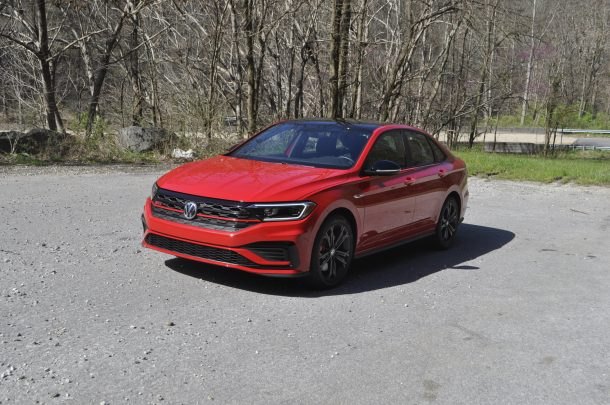















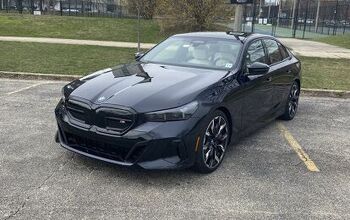

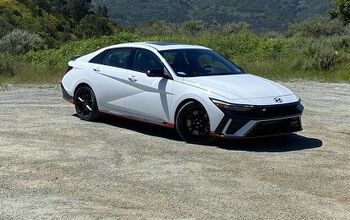



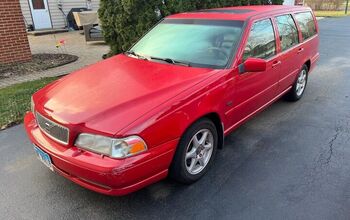
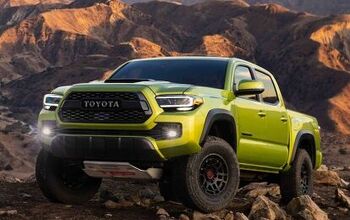








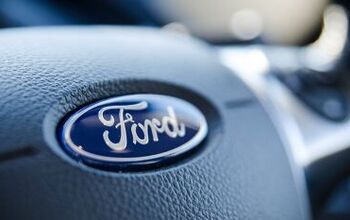

Comments
Join the conversation
So is this the car to get if I want something fun but absolutely must have five seats? We have three school-age children that are also engaged in multiple extra-curriculars but my wife has a Sienna. In the off chance I have to pick all of them up, I’m relegated to driving something that fits all of them. I’ve been driving a Corolla for two years now for that very reason...and it also get 40+ mpg on my 80 mile round trip commute. It’s boring me to death. I’ve also thought about a Challenger but can imagine the little girls would have trouble with the doors in pick up line. Does the GLI truly have more rear leg room than the GTI?
I really like this new GLI and am considering one. I currently drive a 2006 Mazda3 5sp 2.0L sedan and wanted to replace it this year with another Mazda sedan 3 or 6 but neither are offered with the manual transmission. Only the Mazda3 hatchback top of the line $29k+ is offered with manual and I just really don't care too much for the Mazda3 hatchback model. I don't know anything about VW ownership and don't really want a turbo assisted motor but there are very few manual options in a naturally aspirated motor that I can find. I have heard that there is a stalling problem with the 2019 GTI, is this true for the GLI? Also can you use 87 octane gas in the 2019 GLI?